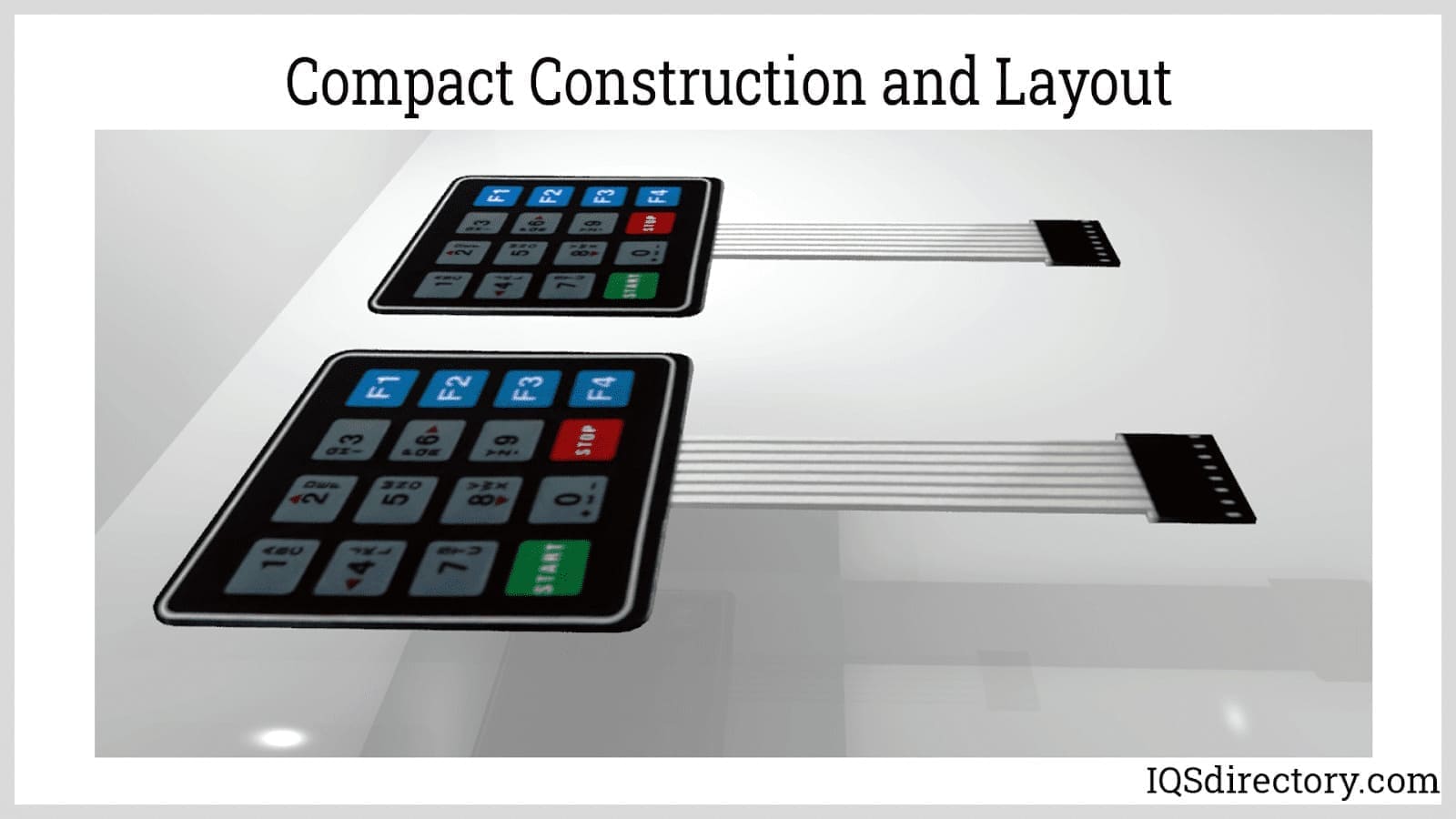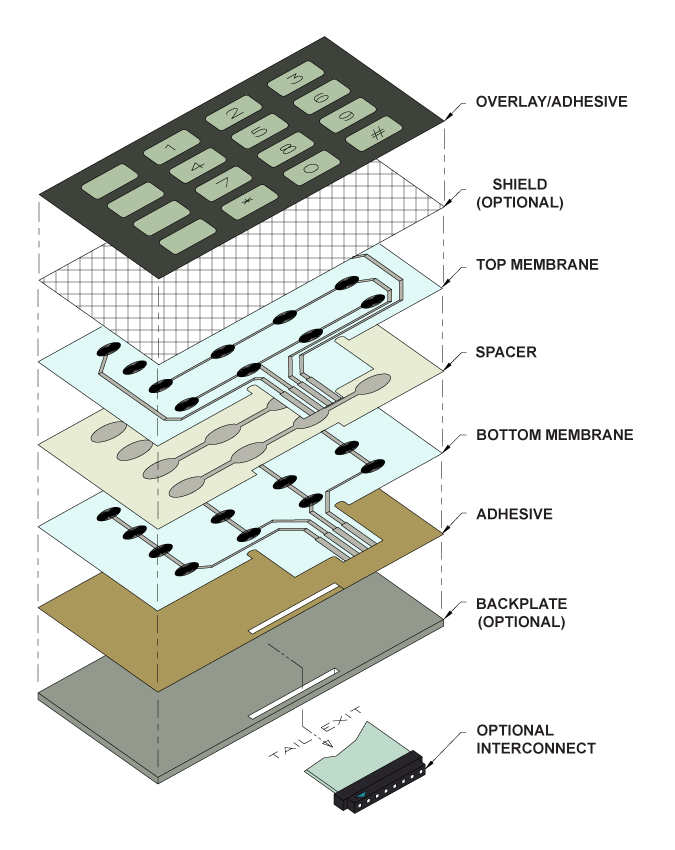The Role of a Membrane Switch in Modern Touch Interfaces and Controls
The Role of a Membrane Switch in Modern Touch Interfaces and Controls
Blog Article
Understanding the Capability of Membrane Layer Switches Over for Individual User Interface Gadget
The capability of membrane switches represents a considerable advancement in customer interface style, combining efficiency with aesthetic convenience. As industries significantly focus on individual experience, understanding the nuances of membrane button technology ends up being important.
What Are Membrane Buttons?
Membrane layer buttons are cutting-edge interface devices that assist in customer communication with digital devices. These functional parts are composed of numerous layers, consisting of a graphic overlay, spacer, and a published circuit layer. The design allows for a seamless combination right into numerous electronic tools, boosting both the aesthetic and functional aspects of individual interfaces.
Membrane switches are commonly employed in a large range of applications, from household appliances to commercial machinery and medical tools. Their building and construction commonly features a slim account, making them a suitable option for small designs. The tactile comments given by these switches can be crafted to fulfill particular user preferences, ensuring reliable communication in between the user and the tool.
Durability is one more substantial benefit of membrane buttons, as they are immune to dirt, wetness, and chemicals, which boosts their life expectancy popular environments. Furthermore, these buttons can be customized in regards to form, size, and graphic style, permitting branding and user-specific features. Overall, membrane layer changes represent a sensible service for boosting customer experience in electronic tools, combining performance with visual charm in an effective fashion.
How Membrane Changes Job
Operating on a straightforward concept, membrane layer switches utilize a layered construction to sign up user input successfully. Each button contains several layers, including a printed circuit layer, a spacer layer, and a leading graphic layer, which are created to interact flawlessly. When an individual presses the top layer, it presses the spacer layer, bringing the conductive elements of the circuit layer right into call with each other.
This call develops a closed circuit, indicating the tool to carry out a details function. The design enables various arrangements, including responsive feedback, which can improve the user experience by offering a physical sensation upon activation. The materials utilized in membrane layer switches commonly consist of versatile substrates, such as polyester or polycarbonate, which ensure sturdiness and strength versus wear and tear.

Trick Benefits of Membrane Layer Switches

Another considerable benefit is their density. Membrane buttons are thin and light-weight, which makes it possible for suppliers to save space in their devices without sacrificing functionality. use this link This attribute is especially helpful in applications where weight and quantity are critical factors to consider.
Additionally, membrane layer buttons are immune to dust, dampness, and chemicals, boosting their toughness. This durability expands their lifespan and reduces the demand for frequent replacements, causing expense savings gradually.
Additionally, the responsive responses provided by membrane layer switches can be maximized to improve customer communication. They can consist of attributes such as increased switches or audible clicks, boosting functionality and customer experience.
Applications Throughout Industries
Interface devices using membrane layer buttons prevail in a broad variety of markets, showcasing their flexibility and capability. Membrane Switch. In the medical industry, membrane layer switches are essential to tools such as diagnostic tools and individual monitoring systems, where their longevity and simplicity of cleansing are important for preserving health criteria. In the vehicle market, these buttons are utilized in control panel controls and infotainment systems, supplying a sleek and modern user interface for individuals.
In addition, the consumer electronic devices market gain from membrane layer buttons in home appliances and portable gadgets, where compact design and easy to use interfaces enhance individual experience. Industrial applications also utilize membrane layer switches over for control panels in equipment and automation systems, stressing their robustness and resistance to severe settings.
In the aerospace and protection markets, membrane switches are utilized in cabin controls and equipment, where reliability and efficiency under severe conditions are critical. In addition, the gaming industry progressively integrates membrane layer buttons in controllers and game machines, adding to an engaging individual experience. On the whole, the versatility of membrane layer switches allows their widespread usage across countless fields, highlighting their relevance in contemporary interface layout.
Future Fads in Membrane Layer Change Modern Technology

Additionally, using innovative products, such as polycarbonate and polyester films, is expected to increase, supplying enhanced longevity and resistance to environmental stressors. These materials contribute to the general longevity of membrane layer buttons, making them ideal for harsher commercial applications.
Furthermore, the consolidation of clever innovation, including IoT connectivity, will make it possible for membrane switches to interact with other devices and systems, promoting a more interactive user experience. This pattern aligns with the growing demand for wise devices across various sectors, from health care to consumer electronics.
Finally, personalization choices are prepared for to broaden, enabling manufacturers to produce bespoke services tailored to certain individual needs and choices. These growths will certainly place membrane layer buttons as necessary parts in the evolution of interface modern technology.
Conclusion
In verdict, membrane layer changes represent a critical development in user interface modern technology, providing a dependable and versatile solution for diverse resource digital applications. As developments in material science and touch picking up technologies continue, the performance and applicability of membrane buttons are anticipated to increase, reinforcing their value in modern electronic tools.
Report this page